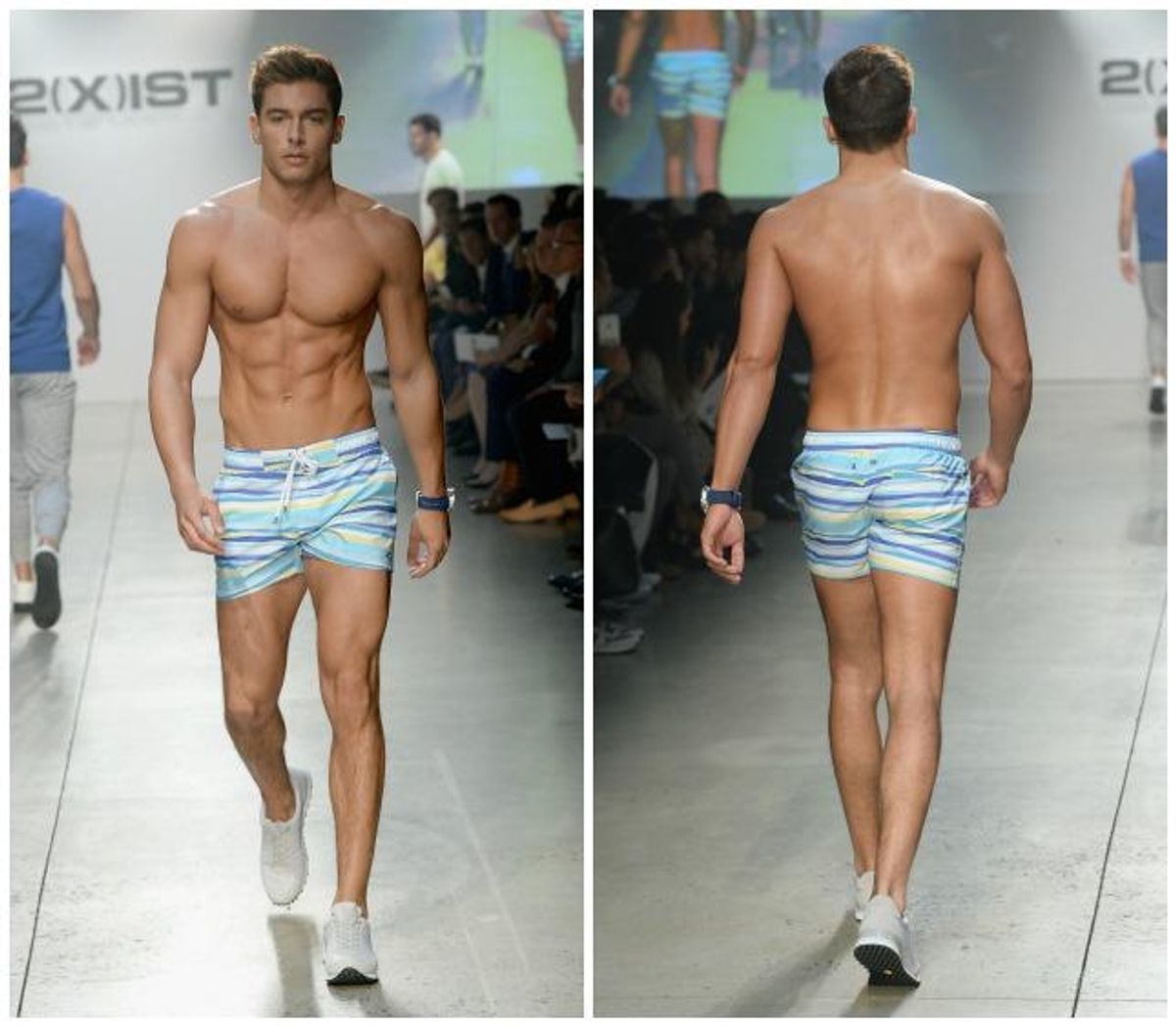Entertainment
The Strut of Indifference & Desire
The Strut of Indifference & Desire

Photo Credit: Getty Images
A dance critic considers the runway during the 2(x)ist show
October 15 2015 5:31 PM EST
October 16 2015 4:54 AM EST
By continuing to use our site, you agree to our Private Policy and Terms of Use.
The Strut of Indifference & Desire

A dance critic considers the runway during the 2(x)ist show
On Wednesday, I went to my first fashion show, for the men's underwear brand 2(x)ist that is now expanding into swimwear, women's wear, and "athleisure" wear (read: swanky sweats). Naturally, I have seen fashion shows portrayed on screen before, so the proceedings did not surprise me. But attending live, I was struck by how much it reminded me of a dance piece: a 10-minute wordless parade of fit bodies in motion, displaying ample skin and abundant attitude.
In particular, I was intrigued by the distinct physicality of the runway strut, and the gendered variation between men and the women. Considered as a dance piece, it is also an effective statement on indifference and desire.
SLIDESHOW | Backstage at the 2(X)IST Spring/Summer 2016 Show
(But what about the kicks and turns and flips that So You Think You Can Dance tells us are pillars of contemporary dance? Never mind those tricks: dance and post-modernism got together in the 1960s, teaching us that even walking counts as dance. So a fashion show is fair game because it is nothing if not walking as performance.)
The 2(x)ist performance began with a short scenario. Before traipsing the runway, the models, some with backpacks and gym bags, crisscrossed the stage, clumsily running into each other as if on a busy New York sidewalk. It was an echo of daily life, suggesting that models are humans, too. (Some choreographers are similarly interested in this kind of relatable physicality, narrowing the gap between the idealized physical specimen on stage and the schlump in the seat.)
Then the struts began, and the models adopted the famous prowl meant to render them invisible while the clothes take center stage. Of course, they are never really invisible and, particularly when a company's primary product is underwear, the body beneath cannot hide.
Fashion followers more seasoned than I are well versed in the variations and elements of the female runway walk. There's the predatory sashay, the militant march, the whimsical twirl. At this show, the women opted for a sporty stroll, their heads bouncing lightly from side to side, allowing ponytails to swing playfully.
The male models, significantly outnumbering the women (owing to the company's mostly male clientele), also walked with practiced nonchalance. They uniformly adopted an imposing, macho saunter (from the side, it was interesting to observe how awkwardly far forward they appeared to lean, though from a head-on perspective, this gave a sense of dominance and determination.)
It was a performance of masculinity that is clearly de rigueur in this industry but also seemed strangely traditional and heteronormative in front of an overwhelmingly gay audience. I wonder if there are examples of, or opportunities for, men to experiment with a wider range of characteristics in their walk: softness, grace, elegance. Would we be less attracted to the clothes if they did?
Like ballet and many modern dancers, the models' eyes never connected to the audience - they were focused somewhere off in the distance. Smiling on the runway, according to several fashion blogs, is a firm no-no. Modeling, like much dance, tends to default to facial blankness, as if to say, "There's nothing to see here, look lower."
The effect is an aloofness that reads as indifference - a performance of not caring. And we are attracted to people who seem not to care; we read it as confidence. Think about the person who refuses to catch your eye at a bar, or doesn't return your text: you're irked, and intrigued. Indifference suggests mystery, mystery breeds desire. The hope, in the business sense, is that the desire is partially satiated by owning the corresponding clothes. It's a perfectly choreographed transaction.
SLIDESHOW | Backstage at the 2(X)IST Spring/Summer 2016 Show